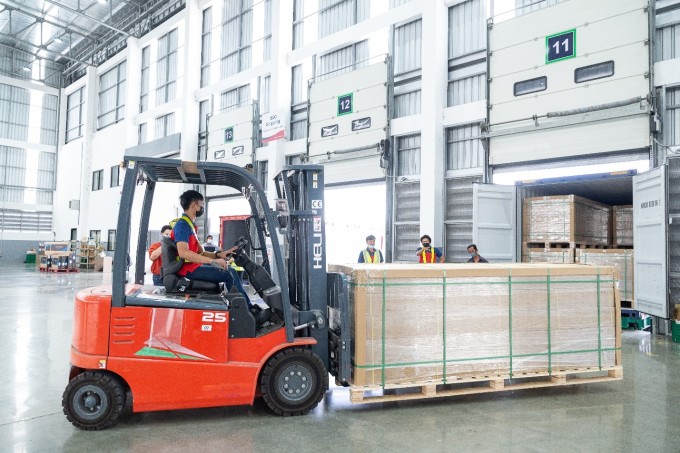Logistics is the lifeblood of international trade and vice versa, trade is a strong driver for economic growth and poverty reduction, according to a representative of the World Bank.
The World Bank has just released the report “Logistics Performance Index 2023 – A measure of countries’ ability to move goods across borders” (LPI). Accordingly, the publication was released after 3 years of supply chain disruption due to the Covid-19 pandemic, causing disruption of the shipping process. LPI 2023 surveyed 139 countries about how easy it is to establish a reliable supply chain. At the same time, the bank also measures structural factors that help improve the quality of logistics services, trade and transport-related infrastructure, and border control of countries.

The economy only develops synchronously when logistics operates continuously. Photo: The African Logistics
“Logistics are the lifeblood of international trade and vice versa,” said Ms. Mona Haddad, World Bank’s Global Head of Trade, Investment and Competitiveness. Our Logistics’ action will help developing countries identify areas for improvement to improve competitiveness.”
Logistics, also known as the transportation and cargo management system, contributes not only to the efficient and safe transport of goods, but also to ensuring a coherent link between the parts of the export process.
The economy can only develop synchronously and smoothly if the logistics chain operates continuously. Therefore, the role of logistics in the economy is increasingly being promoted. Logistics becomes the driving force for the flow of economic transactions and is also an important activity for most goods and services.
According to the report, the average transit time of a container across all potential international trade routes is 44 days, with a standard deviation of 10.5 days. That amount of time accounts for 60% of the time it takes to trade goods internationally. The digitization of the entire supply chain, especially in emerging economies, is allowing countries to shorten port delays by up to 70%, compared to developed countries. Furthermore, demand for green logistics is growing, with 75% of goods manufacturers looking for eco-friendly options, especially when exporting to high-income countries.
“The biggest shipping delays often occur at seaports, airports and intermodal facilities,” said Christina Wiederer, senior economist at the World Bank’s Macroeconomics group. author of the report.
To mitigate this, agencies and businesses need to put in place policies such as improving customs clearance, investing in infrastructure, adopting digital technology and encouraging sustainable logistics. For sustainable logistics, freight operators need to switch to low-carbon methods and more energy-efficient warehousing.
Thanh Thu (according to The African Logistics)







admin